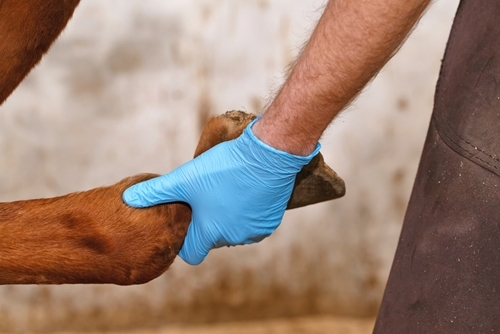During training procedures for your horse, your animal may encounter occasional scratches and cuts along the way. The important thing is to ensure you know how to treat which type of ailment, as well as have the necessary equipment and products that will help your horse properly heal. From identifying what type of wound your horse has to knowing which types of dressings or salves can successfully ease pain, here’s what every trainer should know about treating a horse’s minor injuries:Abrasions
Anytime your horse accidentally falls down or bumps into a fence or rail, it’s likely to experience an abrasion of some sort. Abrasions are loosely defined as subtle skin damage and generally don’t involve any deeper cuts or significant punctures. These are typically very basic injuries to treat, but still require a touch of care and maintenance. The biggest factor to remember when treating skin abrasions with your horse is removing any excess debris, such as dirt or grass. If you spot any unwanted particles, flush the area with saline and gently blot the abrasion until the debris is removed. Afterwards, apply a salve such as Fura-Free™ to soothe and protect the abrasion. Cover with a bandage if needed.Remember, rubbing or scrubbing down the area with a towel will only irritate the abrasion further, so be gentle.
Visible cuts
Whenever you notice your horse limping or any subtle hitch in its giddy up, it could be due to a significant cut along one of its muscles. While bleeding and swelling may not be present, you’ll still have to take necessary precautions to ensure that lameness isn’t prolonged or that no infections are experienced. First, try to assess what caused the cut, and take a close look into whether there may still be pieces of debris present, such as glass, metal or wood splinters. If any materials are visible, tweezers may be needed to successfully pluck out these foreign objects. After the cut has been stabilized, wrapping the wound with poultice can effectively remedy soreness or stiffness. A great product to keep handy is EZ-Willow™ Poultice, which features natural ingredients designed to promote a healthy recovery for your horse. If the cut hasn’t healed in a few days, it may be time to contact your veterinarian for further examination.
Deep punctures
When dealing with a more significant incision or puncture to your horse’s body, the first step is to always properly flush and clean the wound as much as possible. Keep in mind that aggressively cleaning the area may only push a potentially lodged foreign object, such as a shard of glass, further into the body. The location of the puncture wound is also important to consider, especially in the chest, belly or lower leg which can entail more severe consequences. In this scenario, immediately contact your veterinarian, and while you’re waiting, keep an eye on the puncture to ensure any profuse bleeding or severe swelling doesn’t arise.
Essential healing equipment and products
Just as you have a first-aid kit handy around the house, keeping the right products and tools around the stable is also a must. Essential objects to own for your horse injury medical kit include all of the following:
- Gauze rolls
- Sterile saline solution
- Tweezers
- Tape
- Towels
- Vaseline
- Ointment or Salves
When it comes to finding a salve that’s designed to promote healthy healing of minor scrapes, cuts or abrasions, Fura-Free™ comes in gel or liquid form and can encourage healthy skin healing after such an injury. Whenever you are unsure about how to treat an injury, it’s essential to contact your veterinarian immediately to address the situation.








